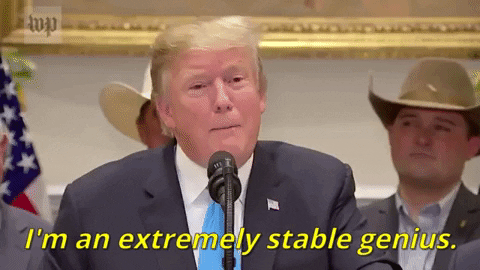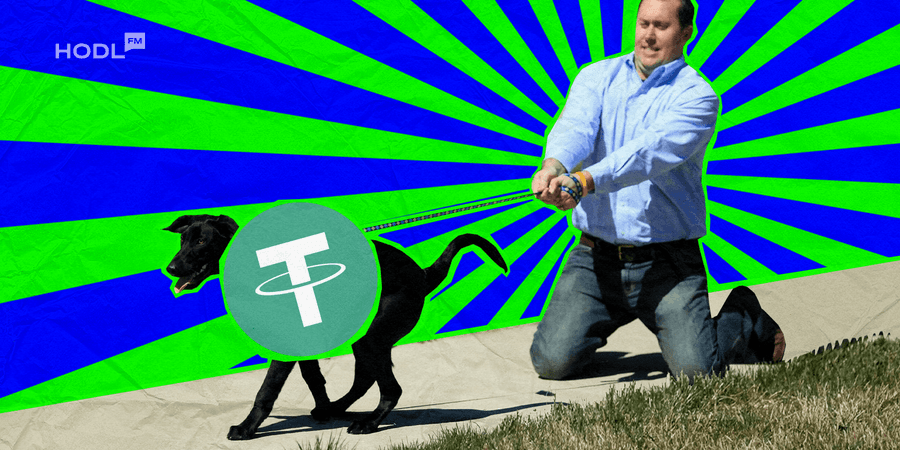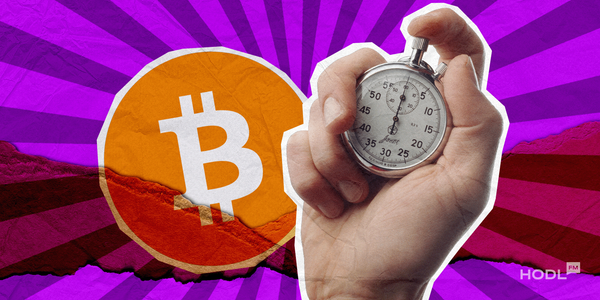Tether is a popular stablecoin that achieves stability by being pegged to the US dollar. This cryptocurrency has been a game-changer since its entry into the DeFi ecosystem. However, many people are not aware of how it really works, and this article will remedy that.
Related: The United Kingdom to Regulate Stablecoins and Digital Assets Staking
How Tether (USDT) Works
Stablecoins are a type of cryptocurrency that is not volatile, which means their value does not change unexpectedly. The most common way that these digital coins achieve this stability is by being tied or pegged to something physical.
Tether USDT is one of the most popular coins in the stablecoins market. It achieves its stability by being pegged to the US dollar. This pegging system means that for every Tether coin, there is a US dollar (a real-world asset) in existence.

It also means that every movement the US dollar makes is reflected in USDT Tether. This pegging system is also why the price of Tether is always equal to the dollar. If one Tether coin is not exactly $1, it’ll only be off by a small amount.
Tether’s Reserve System
This USDT stablecoin regularly offers a breakdown of its reserves for transparency purposes. As of March 2024, the breakdown of Tether’s reserves is as follows:
- There is $99.45 billion worth of USDT in circulation.
- 84.58% of these Tether coins exist as cash, cash equivalents, commercial paper, and short-term deposits.
- 76.87% of these USDT reserves are in US Treasury bills.
- 4.95% of Tether reserves are secured loans to unaffiliated individuals and companies.
- 0.05% of these reserves are held in corporate bonds.
- 2.91% are held in Bitcoin.
- 3.62% are held in precious metals.
- 3.89% are held in a multitude of investments.
Tether’s Issuance Process
Unlike other DeFi and stablecoins, Tether has a unique issuance process. A Tether coin is created by basically having multiple Tether private authorization keys agree to the creation of a new token.
However, this is where things get interesting, as these new tokens are not issued. They are ‘authorized but not issued.’ They stay in storage (Tether’s treasury) until they are transferred out when a customer purchases them. It’s when it enters a customer’s wallet that these tokens become ‘issued’ and enter circulation.
Role and Importance of Tether in the Cryptocurrency Market
Among the numerous blockchain networks and stablecoins, Tether’s existence serves a unique purpose. These purposes are shown below:
- Provision of Liquidity: Tether injects much-needed liquidity or funds into the DeFi market. Many crypto exchanges keep this stable coin around for this purpose, as it means they’ll always have cryptocurrency around to settle customers. After all, the typical volatile cryptocurrencies can lose their value at any time.
- Transactional Bridge: This stablecoin functions as a bridge, allowing transfers and settlements across different exchanges. It also works well for cross-border cryptocurrency transactions, allowing people from different countries to escape currency conversion issues.
- Hedging Mechanism: Tether offers digital asset stability, a rarity in the cryptocurrency market that is known for its volatility or instability. This provides a sense of trust and consistency that attracts investors. It makes cryptocurrency more inviting to the public.
Controversies and Regulatory Scrutiny
Despite the USDT market dominance, Tether has been subject to a number of controversies and regulatory scrutiny. Some critics believe that the Tether issuance rate and Bitcoin price movements are related.
In their opinion, Tether prints new USDT tokens even when people don’t buy Tether, so they can be used to buy Bitcoin. This eventually creates artificial demand and drives up the price of Bitcoin.
There have also been allegations of unbacked token minting and numerous reserve policy changes over the years. First, Tether published that it held 100% USD reserves before later admitting that its assets also include loans, securities, and other cash equivalents. This is creating a lot of unease in people who buy USDT, as they believe the Tether system is not transparent.
Legal Issues
Tether has had multiple lawsuits filed against it, some of them ongoing, some resolved, and others unresolved. One of these legal issues is the 1:1 claim that Tether has regarding its reserves.
The US Commodity Futures Trading Commission (CFTC) fined Tether $41 million in 2021 for this, as their claims were not entirely true. They investigated and discovered that USDT only backed the currency in circulation for only 27.6% of the days from 2016 to 2018.
To make matters worse, Tether has refused independent audits to verify any claims of its backing. It only chooses to continue publishing reports of its reserves without any breakdown.
Some people also believe that Tether is involved in pump-and-dump schemes and spoofing. All of these are fraudulent activities used to manipulate the cryptocurrency market.
Future Outlook for Tether and Stablecoins
Tether is one of the biggest stablecoins out there, with USDT transactions accounting for most of the 2023 and early 2024 cryptocurrency transactions. Although Tether USDT itself isn’t much of an investment as its value is fixed at $1, its stability is a useful tool.

The seamless integration of Tether USDT into cryptocurrency exchanges also shows the importance of this cryptocurrency to the DeFi ecosystem. Businessmen also trust this coin as it allows them to take advantage of the DeFi market without risking price movements.
More on Edu Crypto:
- How to Stay Safe in Peer-to-Peer (P2P) Trading
- Ripple is Launching USDT- Rival as Tether Faces Regulatory Woes
However, this potential is marred by the ambiguity surrounding Tether’s reserves and the various lawsuits filed against it. Nonetheless, Tether still remains a suitable option for anyone looking for a stable cryptocurrency for a financial transaction.
Stablecoins are now showing their importance in the DeFi ecosystem, by providing some much-needed price stability. With their role in trading and decentralized finance, they could end up bridging the gap between blockchain and traditional finance.
Disclaimer: All materials on this site are for informational purposes only. None of the material should be interpreted as investment advice. Please note that despite the nature of much of the material created and hosted on this website, HODL FM is not a financial reference resource and the opinions of authors and other contributors are their own and should not be taken as financial advice. If you require advice of this sort, HODL FM strongly recommends contacting a qualified industry professional.




